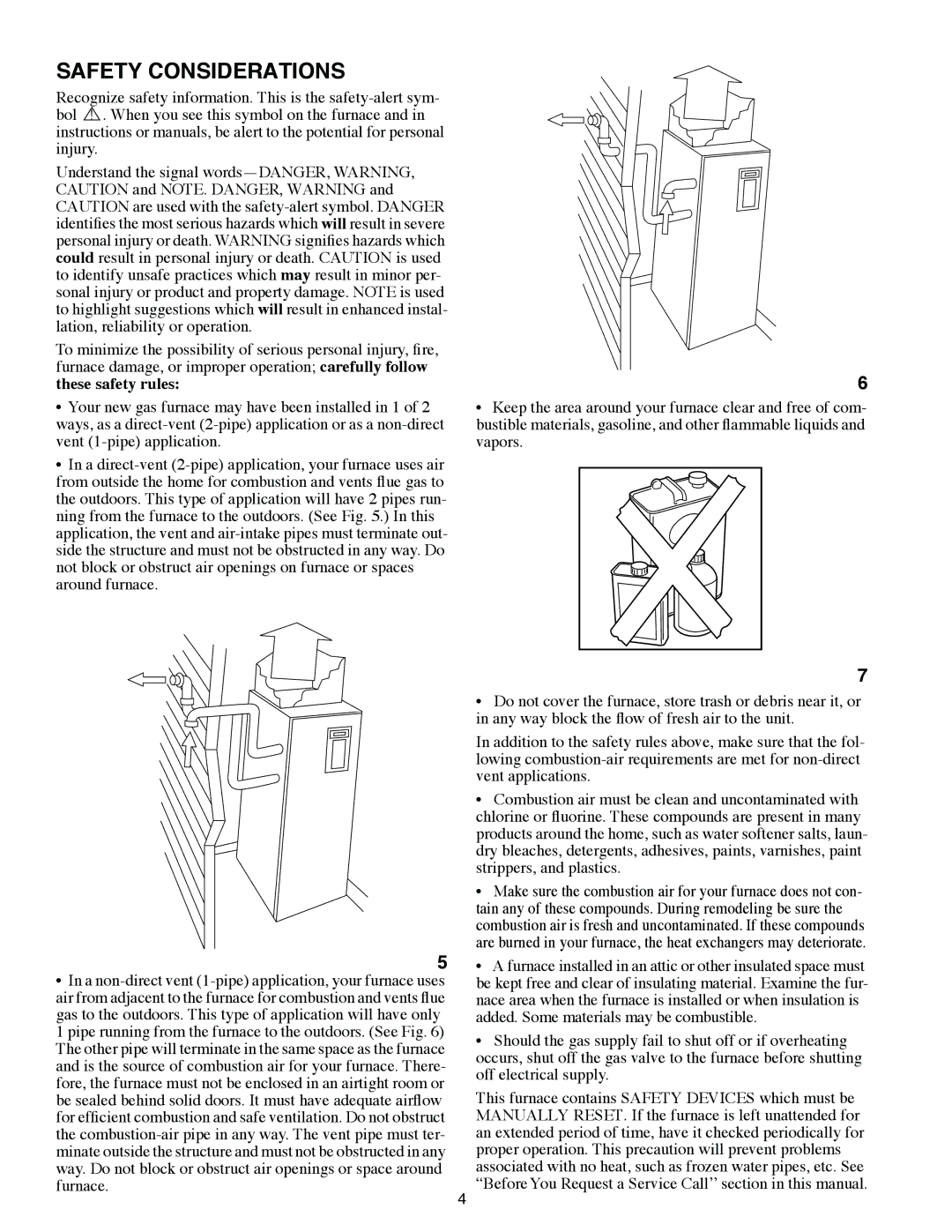
SAFETY CONSIDERATIONS
Recognize safety information. This is the
Understand the signal
To minimize the possibility of serious personal injury, fire, furnace damage, or improper operation; carefully follow
these safety rules:
•Your new gas furnace may have been installed in 1 of 2 ways, as a
•In a
6
•Keep the area around your furnace clear and free of com- bustible materials, gasoline, and other flammable liquids and vapors.
5
•In a
7
•Do not cover the furnace, store trash or debris near it, or in any way block the flow of fresh air to the unit.
In addition to the safety rules above, make sure that the fol- lowing
•Combustion air must be clean and uncontaminated with chlorine or fluorine. These compounds are present in many products around the home, such as water softener salts, laun- dry bleaches, detergents, adhesives, paints, varnishes, paint strippers, and plastics.
•Make sure the combustion air for your furnace does not con- tain any of these compounds. During remodeling be sure the combustion air is fresh and uncontaminated. If these compounds are burned in your furnace, the heat exchangers may deteriorate.
•A furnace installed in an attic or other insulated space must be kept free and clear of insulating material. Examine the fur- nace area when the furnace is installed or when insulation is added. Some materials may be combustible.
•Should the gas supply fail to shut off or if overheating occurs, shut off the gas valve to the furnace before shutting off electrical supply.
This furnace contains SAFETY DEVICES which must be MANUALLY RESET. If the furnace is left unattended for an extended period of time, have it checked periodically for proper operation. This precaution will prevent problems associated with no heat, such as frozen water pipes, etc. See “Before You Request a Service Call’’ section in this manual.
4
